- All
- Product Name
- Product Keyword
- Product Model
- Product Summary
- Product Description
- Multi Field Search
Views: 0 Author: Site Editor Publish Time: 2025-10-28 Origin: Site








In today's corporate landscape, open‑plan offices are celebrated for their flexibility, collaboration, and cost efficiency. However, they present a unique challenge: noise and lack of privacy can negatively affect employee comfort, focus, and productivity. To create an effective workspace, designers, contractors, and corporate clients must carefully select the right acoustic solutions.
For companies like Hongye Furniture, a global provider of commercial office furniture solutions, understanding whether to deploy acoustic panels, partition walls, or a hybrid approach is essential for optimizing both functionality and design. This article explores both solutions, compares their features, examines real-world case studies, and provides clear guidance for selecting the right option for different open-office scenarios.
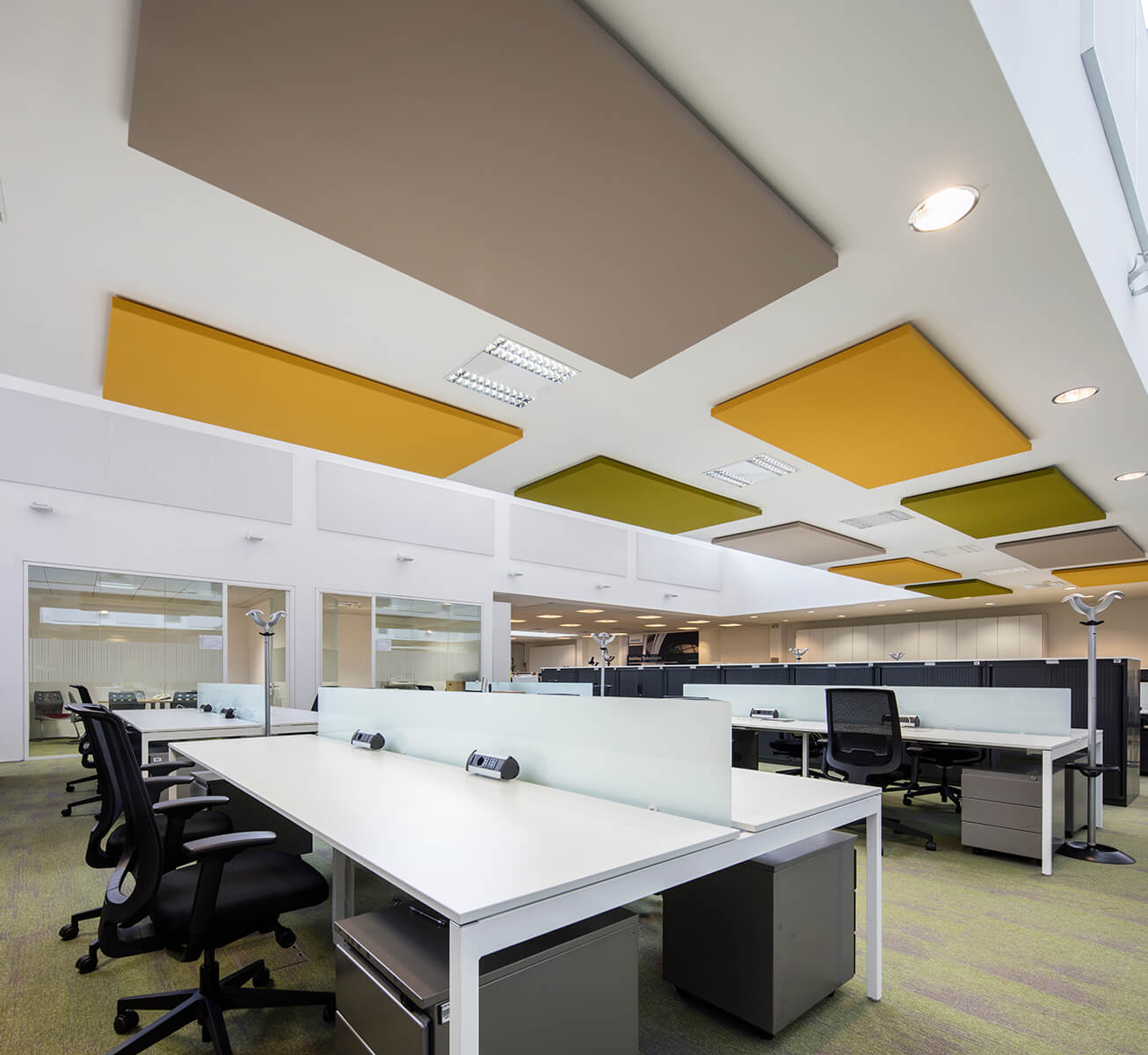
Acoustic panels are absorptive materials installed on walls, ceilings, or as freestanding units. Their primary function is to reduce reverberation time, lower background noise levels, and improve speech clarity. Typically made from porous or fibrous cores such as mineral wool, polyester fleece, or foam, they are often wrapped in decorative fabric to blend with office interiors.
Sound Absorption: Designed to absorb mid-to-high frequency sound waves, reducing echo without necessarily blocking sound entirely.
Flexible Installation: Panels can be wall-mounted, ceiling-suspended, or used as baffles, allowing retrofits with minimal disruption.
Design Adaptability: Available in diverse shapes, colors, and textures, making them a visual design element.
Cost-Effectiveness: Less expensive and quicker to install than full partition walls.
Improve speech intelligibility and reduce distractions.
Maintain visual openness and access to natural daylight.
Offer modular scalability, allowing addition or relocation of panels.
Require less structural work and minimal disruption to daily operations.
Provide limited visual privacy.
Less effective in fully isolating zones or blocking noise.
Require sufficient wall or ceiling space, potentially affecting lighting or HVAC systems.
Case Example: In a study by Caruso Acoustic, a 461 m³ open-plan office was treated with 24 suspended sound-absorbing panels. The average reverberation time dropped from 2.17 s to 0.66 s, achieving a sound level reduction of 5.15 dB .
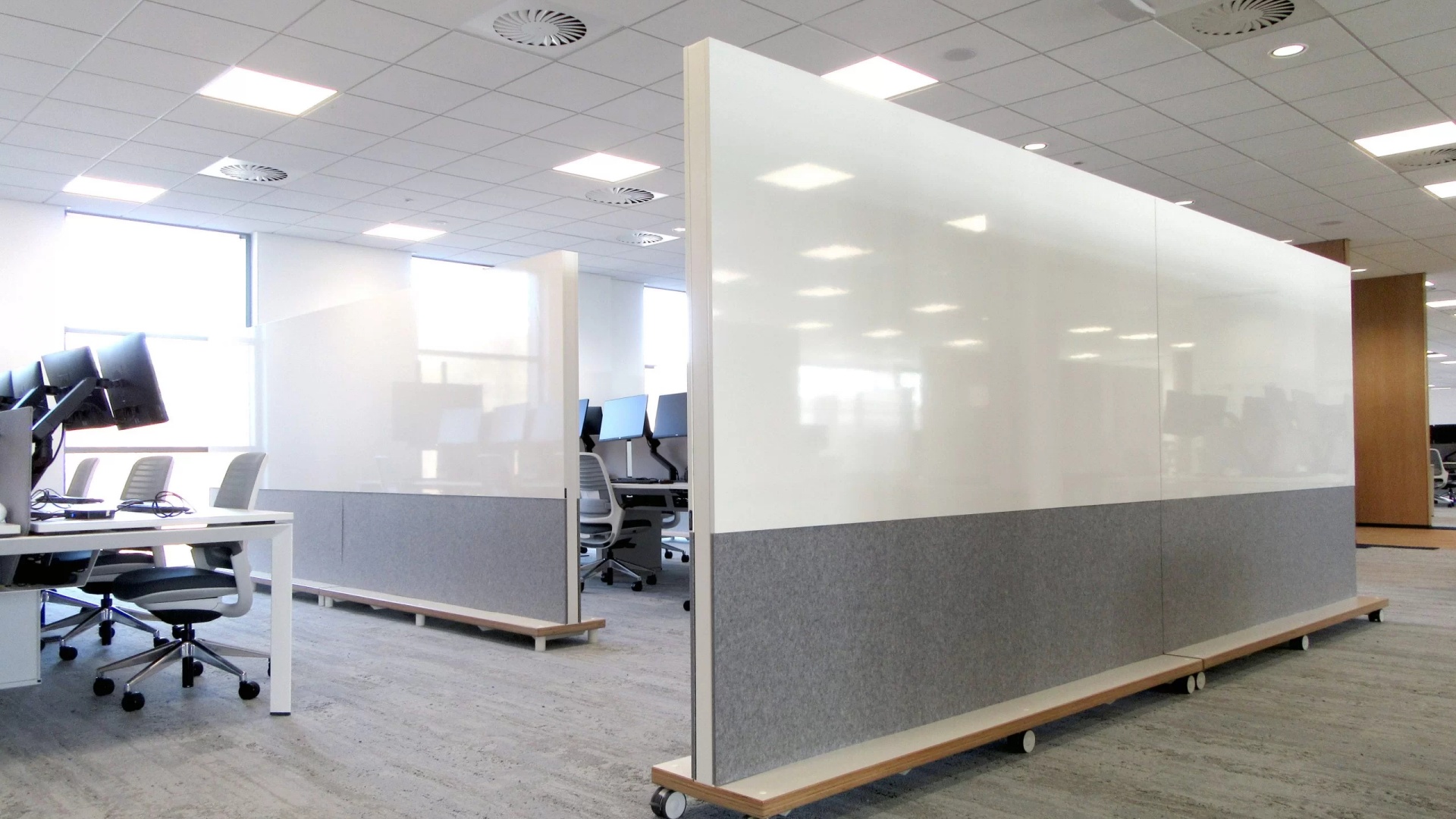
Partition walls, also called office screens or divide walls, are vertical structures used to subdivide office space. They can be full-height, half-height, glass, metal, wood, or modular demountable units. In open-plan offices, partitions create functional zones such as focus areas, private offices, meeting pods, or collaborative bays.
Visual and Acoustic Zoning: Provide separation both visually and acoustically.
Material Variety: Options include glass, wood, aluminium, fabric-wrapped panels, and acoustic cores.
Integration Potential: Can incorporate power outlets, data ports, glazing, sliding doors, or mobility features.
Physical Presence: Occupy floor space, requiring careful planning for circulation and layout.
Provide strong visual and physical privacy.
Better at containing noise, especially with acoustic cores or sealing.
Define zones that support productivity, focus work, and collaborative areas.
Higher material and installation costs.
Reduce openness and daylight penetration.
Less flexible; moving walls is disruptive.
May require structural, fire, or HVAC considerations.
Acoustic Panels vs Partition Walls: Key Differences
| Feature | Acoustic Panels | Partition Walls |
Noise Reduction (Reverberation) | High for reverberation & echo | Medium-High depending on material & sealing |
Speech / Visual Privacy | Low | High |
Flexibility & Reconfiguration | Very high – panels can be added/moved | Medium to low – semi-permanent |
Installation Cost | Moderate | Higher |
Disruption to Existing Space | Low | High |
Design / Aesthetic Integration | Strong – decorative options available | Strong, but bulkier |
Best Suited For | Reducing echo & distractions in open plan | Defining zones, private offices, executive suites |
Office Volume: 461 m³
Intervention: 24 ceiling-mounted sound-absorbing panels
Outcome: RT dropped from 2.17 s → 0.66 s; sound reduction ~5.15 dB
Interpretation: Significant improvement in acoustic comfort with minimal disruption
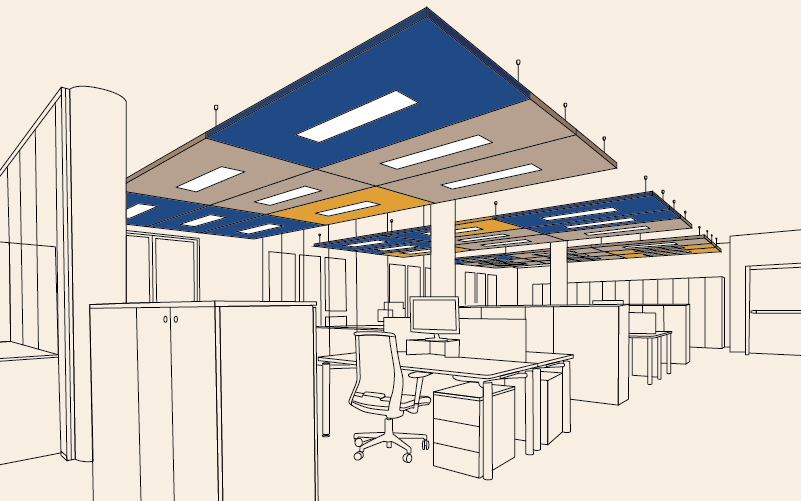
Office Volume: 620 m³, initial RT = 3.13 s; Reception 118 m³, RT = 1.49 s
Intervention: Ceiling panels, desk screens, freestanding acoustic partitions
Outcome: Open space RT reduced to 1.02 s (−4.86 dB); Reception RT to 0.65 s (−3.62 dB)
Interpretation: Combining absorption and partial screening enhances performance
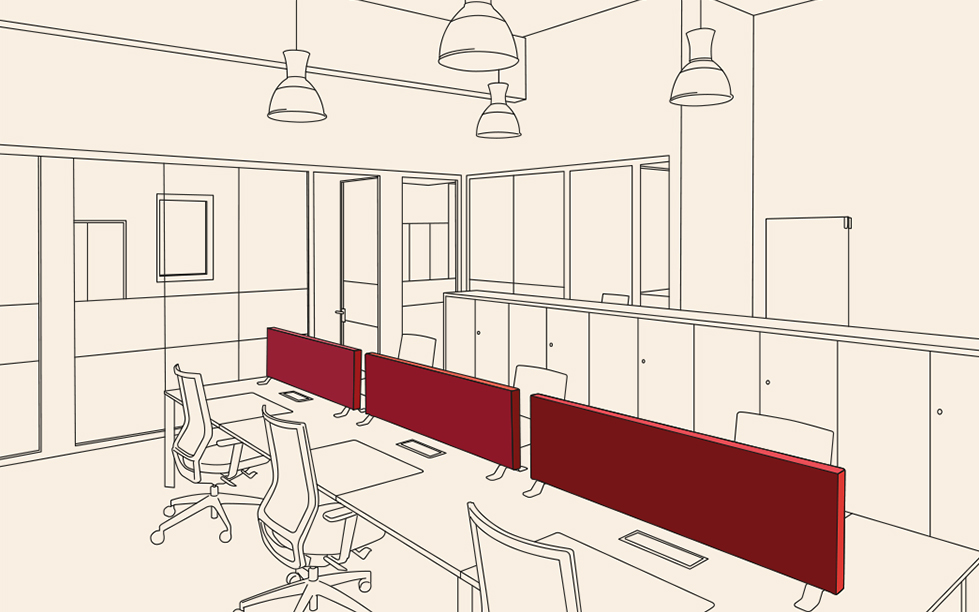
Productivity & ROI Data
| Panel Type / Installation | Result |
Wall-mounted acoustic panels | 19% fewer absenteeism due to acoustic stress |
Hybrid design (absorption+blocking) | 27% faster task completion in treated areas |
Cost Recoup Period | 18–24 months |
Table 1: Typical Cost per 100 m² Office Space
| Solution | Material Cost (USD) | Installation Cost (USD) | Total Cost (USD) | Notes |
Acoustic Panels | 1,200 | 800 | 2,000 | Quick installation, scalable |
Low / Half-height Partition | 2,500 | 1,200 | 3,700 | Ideal for zoning, semi-private |
Full-height Partition (with acoustic core) | 4,000 | 2,000 | 6,000 | High privacy, more complex |
Table 2: Noise Reduction Comparison
| Space Type | Solution | Noise Reduction (dB) | RT (s) Change | Notes |
Open Office 461 m³ | Suspended acoustic panels | −5.15 | 2.17 → 0.66 | Caruso Acoustic case |
Open Office 620 m³ | Panels + desk screens + partitions | −4.86 | 3.13 → 1.02 | Hybrid solution |
Reception 118 m³ | Panels + partitions | −3.62 | 1.49 → 0.65 | Hybrid solution |
Table 3: Installation Time and Disruption
| Solution | Installation Time | Disruption Level | Notes |
Acoustic Panels | 1–2 days | Low | Can be installed during normal operations |
Half-height Partitions | 3–5 days | Medium | Requires moving furniture and partial disruption |
Full-height Partitions | 7–10 days | High | Construction-intensive, may require downtime |
Recommendation: Acoustic Panels
Focus: Reduce reverberation and distractions across open space
Solution: Ceiling-hung panels, wall-mounted absorbers, desk-mounted screens
Avoid: Full-height partitions unless defining quiet zones
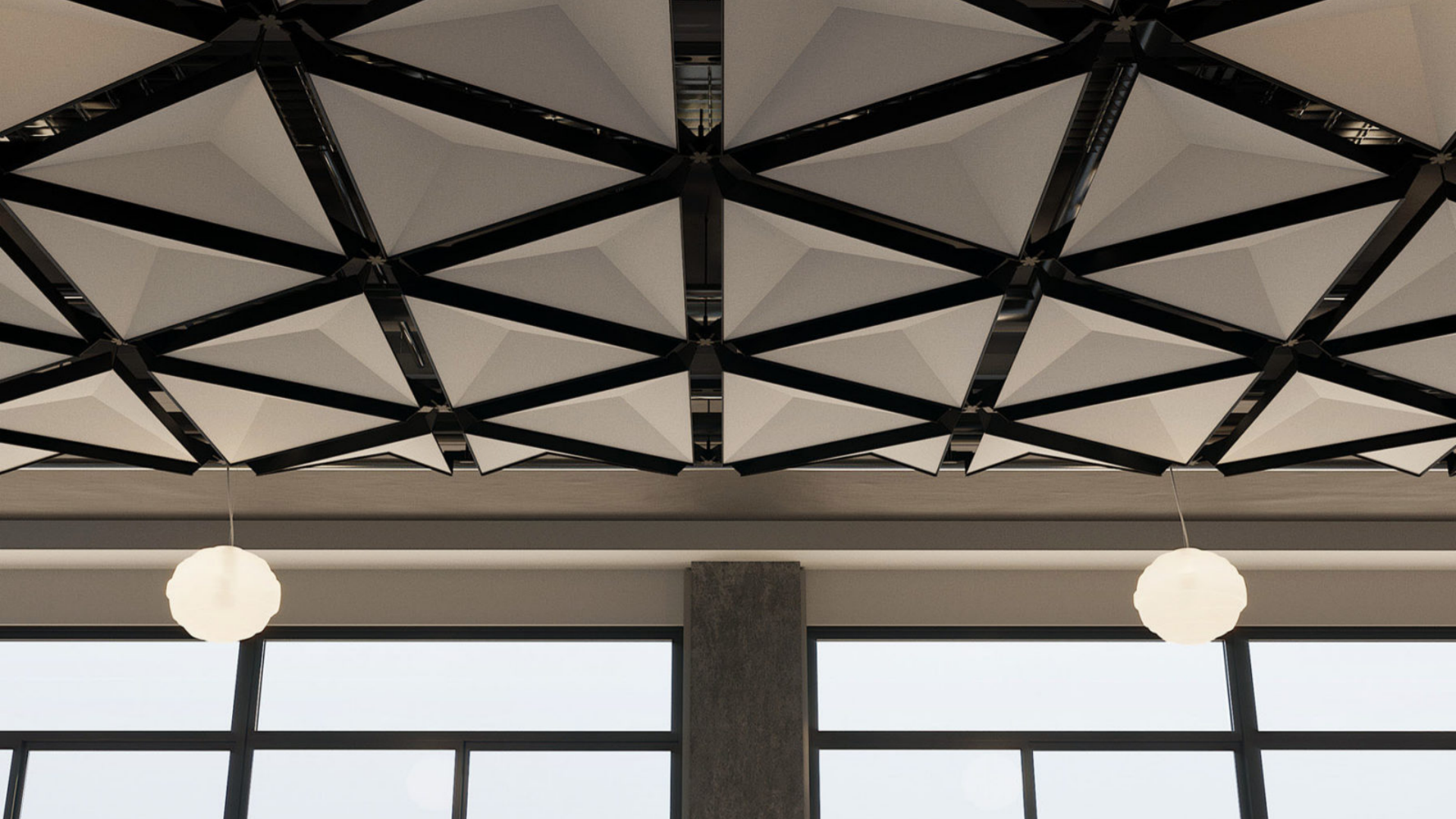
Recommendation: Hybrid (Panels + Low/Medium Partitions)
Acoustic panels for open benches
Half-height partitions for semi-private zones
Maintains openness while providing defined areas
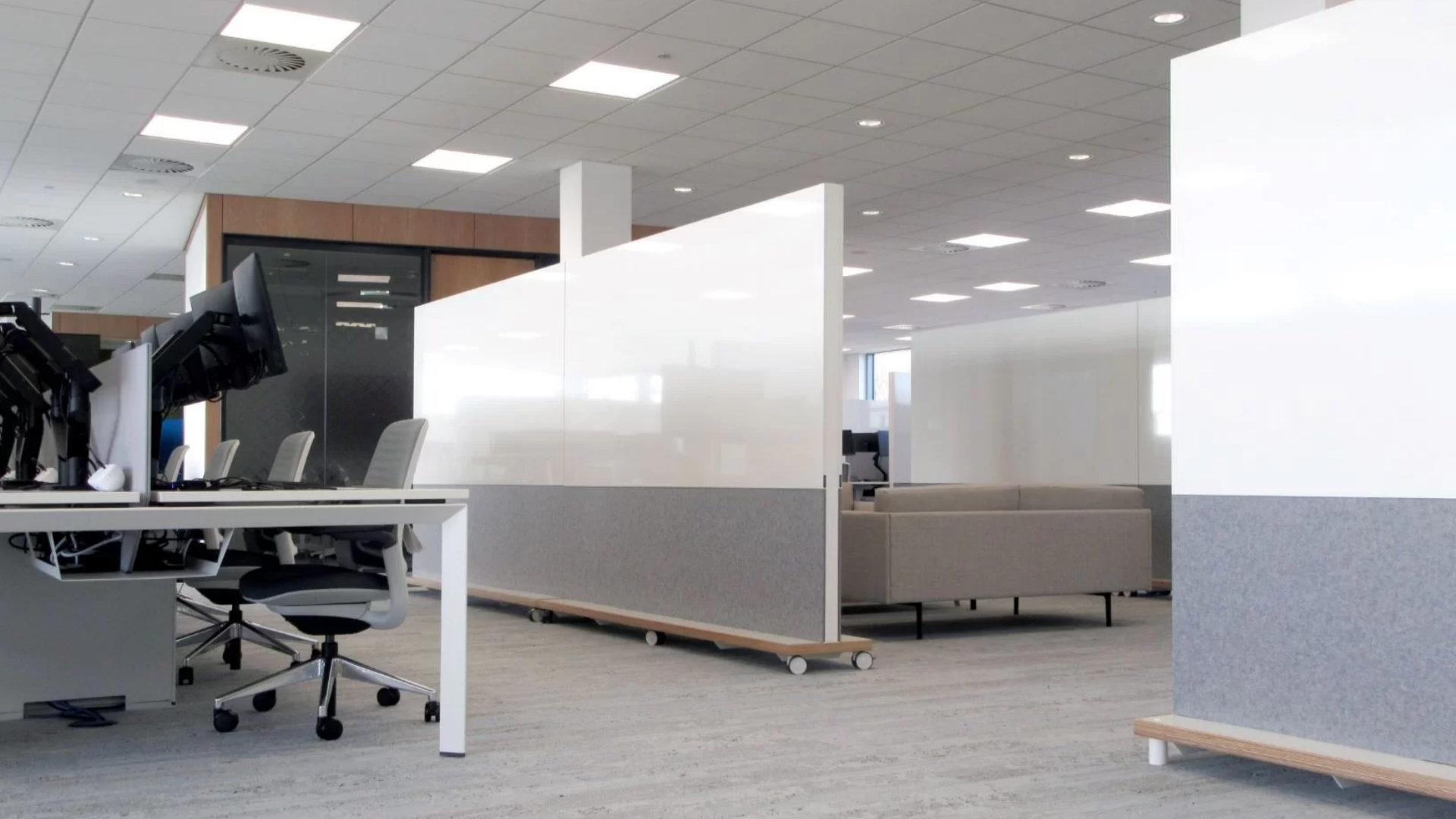
Recommendation: Partition Walls
Goal: Visual and acoustic separation for confidential discussions
Use glass or solid partitions with acoustic seals
Optional: Absorptive panels for enhanced comfort

Recommendation: Acoustic Panels
Quick installation, minimal disruption, lower cost
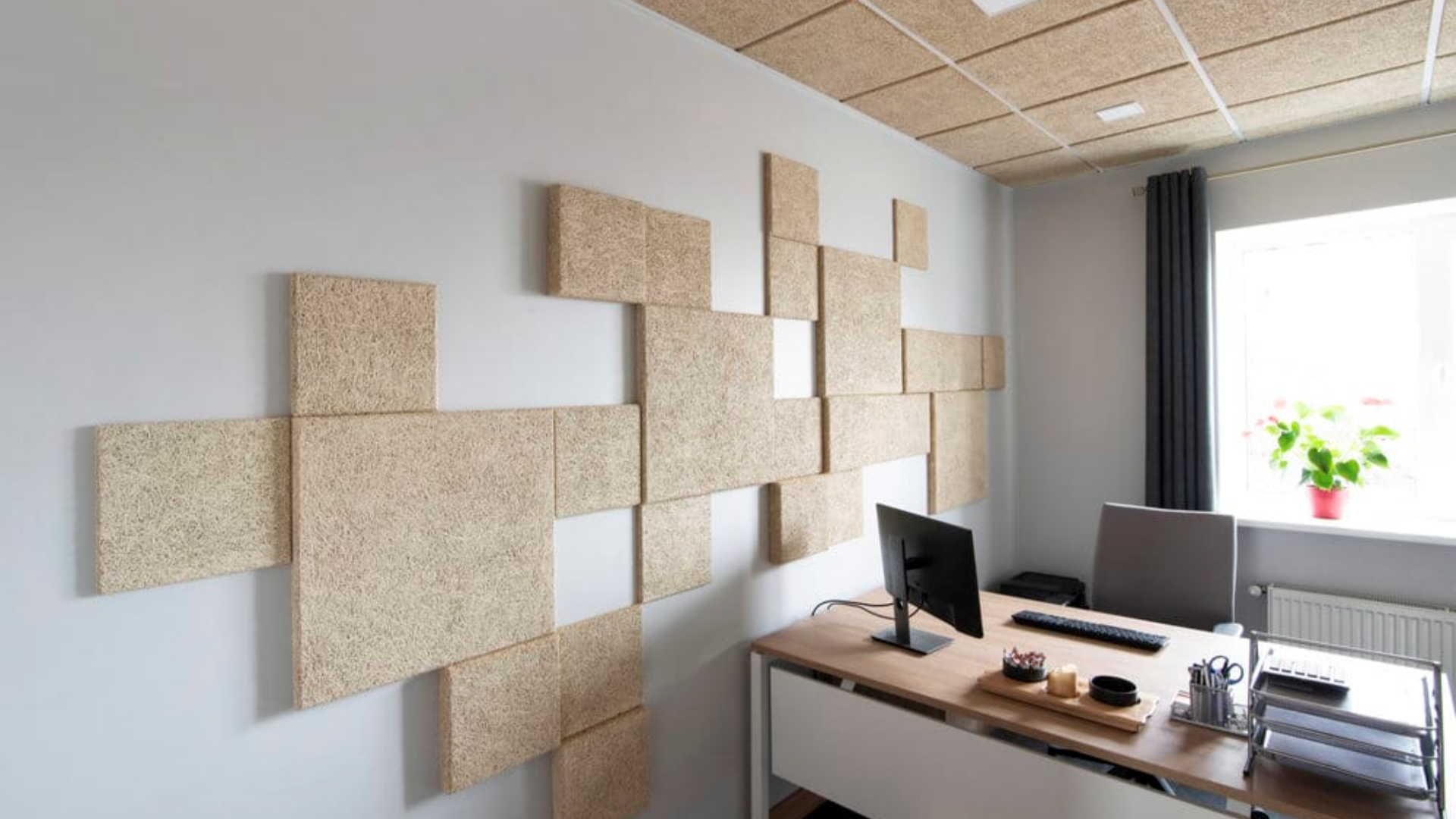
Key Decision Factors:
Acoustic Goal: Reduce echo or create enclosed zones?
Spatial Flow / Daylight: Will partitions block light or circulation?
Budget & Disruption: Panels are cheaper/faster; walls cost more/time.
Future Flexibility: Panels are easier to move or upgrade.
Aesthetics: Both solutions can complement office branding; panels allow more decorative freedom.
Q1: Do acoustic panels block all office noise?
A: No—they mainly reduce reverberation and echo. Partition walls provide better sound containment for full privacy.
Q2: Can partition walls be moved easily?
A: Modular walls can be reconfigured, but effort and cost are higher than adjusting acoustic panels.
Q3: Which is more cost-effective?
A: Acoustic panels generally cost less and install faster. Partitions offer better privacy but at higher upfront cost, which may pay off via productivity gains and reduced absenteeism.
Q4: Can both solutions be used together?
A: Yes. Acoustic panels control general sound, while low/medium partitions define zones without fully closing spaces.
Q5: Will partition walls reduce reverberation like panels?
A: Not fully. Unless built with absorptive cores, walls may reflect sound and cause additional echo.
Choosing between acoustic panels and partition walls depends on your open office goals. For reducing noise, echo, and distractions in open areas, acoustic panels are efficient, flexible, and minimally disruptive. For visual and acoustic separation—private offices, meeting rooms, executive suites—partition walls are more appropriate. Often, a hybrid approach combining panels for general absorption and partitions for zoning delivers the optimal balance of comfort, productivity, and aesthetics.
For corporate office projects, furniture suppliers like Hongye Furniture provide integrated solutions including bench seating, modular desks, storage, and acoustic zoning, enabling a complete turnkey office solution.
Upgrade your workspace today. Contact Hongye Furniture for a free consultation and tailored office furniture + acoustic zoning plan.
No.1 Section, Heshan Industrial City, Heshan, Jiangmen, Guangdong, China
+86-137-0227-9783
Mon - Sat: 8 AM - 6PM
Sun: 11 AM - 3 PM